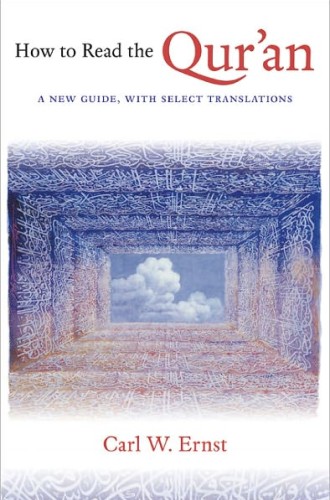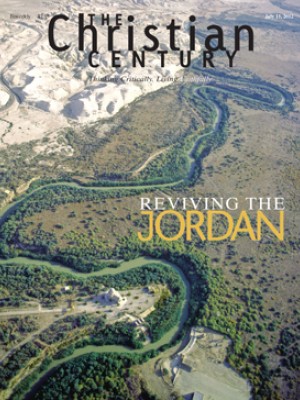How to Read the Qur’an, by Carl W. Ernst
In the decade since 9/11, it seems as though every trade publisher and university press has brought forth a volume like this one: a guide to the Qur’an for the perplexed. Carl Ernst, a professor of religious studies at the University of North Carolina–Chapel Hill, eschews the usual method for books of this sort. He contends that guides to the content, themes and teachings of the Qur’an prematurely iron out the tensions and conflicting statements in the text. Instead, he appeals to us as readers and teaches us how to make sense of the text, because in order to understand what the text says, we need to understand how it says it.
As he makes a case for his chronological, literary and intertextual approach, Ernst enumerates the sources of perplexity about the Qur’an concisely and persuasively, including archaic translations in King James English; selective proof-texting by politically motivated, unsympathetic polemicists; unwarranted expectations that a sacred text should take narrative form; and speculative conspiracy-theory explanations of the Qur’an’s composition.
Read our latest issue or browse back issues.
Ernst’s alternative mode of reading hangs on three key strategies. The first: don’t begin at the beginning! Read the text chronologically, he advises, and he includes a chart that lays out both the traditional Egyptian ordering and the 19th-century text-critical ordering by German Orientalist Theodor Nöldeke. The lyric qualities of the shorter early suras, or chapters, received by Muhammad at the beginning of his career in Mecca and before his flight to Medina are the general reader’s best entry into the Qur’an. The length and complexity of the suras increased through the 22-year career of Muhammad. In the Qur’an, the suras are generally arranged from longer to shorter, and thus in roughly reverse chronological order.
A chronologically ordered reading makes visible the characteristic styles, themes and concerns of the Meccan and the Medinan periods. The earliest suras were used as worship texts for the followers gathering around Muhammad in the early period of his career. Careful observation of the style and flow of the text reveals later insertions into these suras, sometimes to explain unfamiliar terms or spell out exceptions to general commands. Ernst takes the literary unity of the suras as a starting point and generally accepts the traditional view that the Qur’anic texts date to the lifetime of the prophet. Readers familiar with historical-critical approaches in biblical studies will appreciate Ernst’s careful, contextual and analytical reading. More investigation of questions surrounding the compilation and organization of the Qur’an would have been helpful, given the insight that such inquiry could offer into the development of the nascent Islamic community.
Ernst’s second key strategy for making sense of the Qur’an involves attending to a particular organizational structuring of the suras known as ring compositions: a chiastic ordering of the text that mirrors the themes of the sura from the center (such as A B C/X/C’ B’ A’), in which a central element (X) often speaks to a universalizable principle that is the focal teaching of the sura, or of a section thereof. These general principles can be distinguished from the more context-specific commands and statements, which are of limited application.
The structure in the later, longer Medinan suras becomes quite complex, with subsections having rings within rings, for example. Ernst takes pains to demonstrate this structure, summarizing the recent work of other scholars. Many readers will find themselves skipping or skimming Ernst’s detailed analyses of the Medinan suras. Inductive identification of their themes and emphases appears at points more an art than a science. But the artistry and oral character of the Qur’an is one of the bold lessons that one draws from reading Ernst’s exposition: in order to appreciate the early and enduring power of the Qur’an, one has to become attentive to the oral and aural character of its structure. Such sensitivity is foreign to Western conventions of literature and narrative development.
A third focus of Ernst’s investigation is the intertextuality of the Qur’an as prophetic literature—that is, the ways in which it refers back to and appropriates for its own purposes Jewish and Christian scriptures. For Christians and Jews, this is a fascinating discussion. “Reinterpretation and reframing of previous revelations” is the characteristic stamp of prophecy, Ernst tells us. “Prophecy always looks back toward earlier manifestations of prophecy,” he writes, “by making a rhetorical claim to be the true meaning of earlier proclamations. . . . New interpretations of texts from a previous age . . . keeps them relevant to changing situations.”
Ernst’s approach to intertextuality takes into account the controversial and complex interrelationship among Jewish, Christian and Islamic scriptures. He argues that apologetic approaches by each community to demonstrate the authenticity of its own scripture and the inferiority of the scripture of the other communities have come at the cost of seeing the complex ways that scriptures live and change over time. Intertextuality becomes especially prominent in the Medinan suras, which were composed as Muhammad’s relationship with Jewish and Christian constituencies in his community became more contested.
As with his earlier book, Following Muhammad: Rethinking Islam in the Contemporary World, much of the value in this book rests in Ernst’s religious studies approach to his topic. The book clearly grows out of his experience teaching the Qur’an to university students, and it offers appendices especially useful in college settings: one contains a succinct structural analysis of each Meccan sura; another, an interesting set of exercises for analyzing Qur’anic texts. Ernst presents the current state of scholarly work in progress. Readers committed to reading the Bible using historical-critical tools will be excited by the prospect of applying those methodologies to the Qur’an.
Ernst’s focus on ring composition will need to be supplemented by attention to other kinds of literary and poetic play and structuring in the text. And there are important questions that Ernst does not address. For example, do the structures of the longer suras provide clues to the “occasions of revelation” during the lifetime of Muhammad or to the process of their compilation or composition after his death? Such investigation is important for making sense of both the formation and the standardization of the text, and the formation and construction of authority within what would become the early Muslim community.
Ernst notes the injustices done by some Orientalist scholarship of the past. But his work also makes the case that humanistic scholarship can make contributions distinctive from yet not necessarily antithetical to faith-based presentations of the Qur’an. Fairness requires that we not misrepresent the Qur’an, and Ernst’s scholarship makes room for a respectful appreciation of the religious commitments of many who approach it. Such a judicious approach models a way forward for Christians, Jews, Muslims and people who profess none of these faiths to read the Qur’an and talk with one another about what they read.






